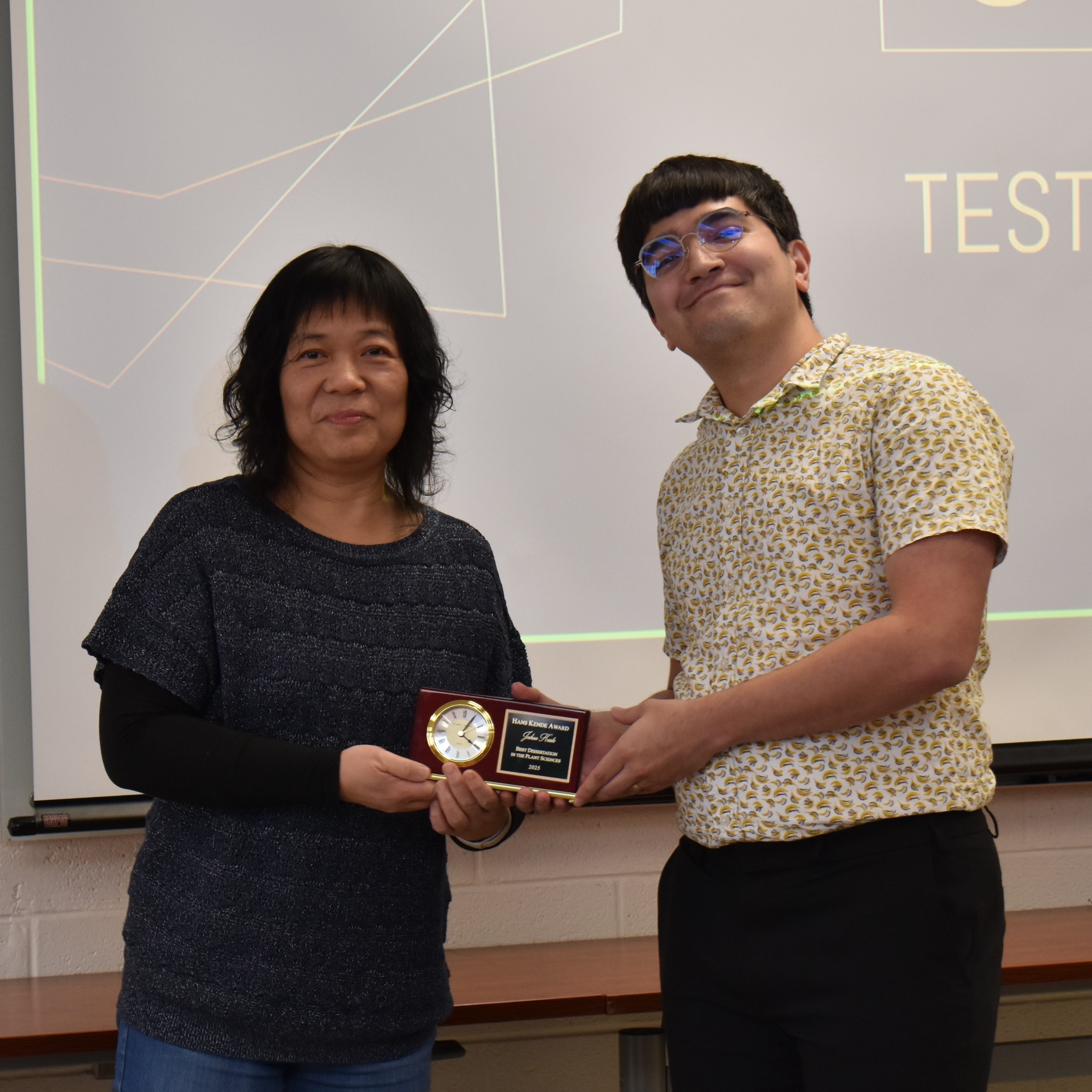DOE renews funding for innovative photosynthesis research at MSU-DOE Plant Research Laboratory
The U.S. Department of Energy (DOE) has awarded the Michigan State University-DOE Plant Research Laboratory (PRL) an $11.25 million DOE Office of Basic Energy Sciences (BES) competitive renewal grant to continue its innovative photosynthesis research.
The three-year grant (2020-2023) will allow PRL scientists to continue investigating how photosynthetic organisms work on the molecular level with an eye toward developing new technologies that improve human lives, particularly in the areas of bioenergy, industry and medicine.
"The PRL has a long and distinguished history at MSU,” said Stephen Hsu, senior vice president for research and innovation at MSU. “Continued investment in fundamental and applied research related to photosynthesis will yield important benefits in decades to come."
Photosynthesis is a biological process that uses ‘basic’ ingredients – carbon dioxide, water, and sunlight – to sustainably make food, fuel and chemicals that power life on Earth.
A team of 11 PRL faculty members will lead a group of exceptional postdocs, students and technicians as they explore the fundamental ways photosynthetic organisms capture sunlight to then convert and store it as usable energy. This talent pool represents a wide range of expertise in molecular, synthetic and cell biology, biophysics, biochemistry, plant and microbial physiology, genomics, and genetics.
“One of the most gratifying aspects of the newly funded work at the PRL is that it is made possible by bringing together a highly diverse group of scientists with complementary expertise,” said Christoph Benning, PRL director and principal investigator on the grant. “This range of talents gives us a chance to tackle some of the most fundamental biological questions related to photosynthesis.”
With the support provided in this new phase of funding, PRL scientists will study photosynthetic processes across various scales that range from basic enzymes and reactions, to how photosynthesis integrates into their host organisms, to how these organisms interact with the environment.The group will also apply biological engineering techniques to improve photosynthetic productivity. More specifically, the grant covers three areas:
- Understanding how photosynthesis works in the ‘real world’: Natural environments are unpredictable. Light conditions can change in fractions of a second; temperature extremes are common. Photosynthetic productivity (and by extension, crop yield) is limited by these challenges in ways that we do not fully understand.
- Understanding how organisms integrate the energy harvested from photosynthesis: Photosynthetic organisms must balance energy supply with metabolic needs such as plant leaf growth or algal reproduction. Maintaining balance is crucial to build healthy organisms and to avoid negative reactions.
- Using synthetic biology to understand cyanobacterial photosynthesis: Cyanobacteria are some of the most successful photosynthetic organisms. The team will use engineering principles to explore the basis of their success and to harvest cyanobacterial parts to build new technologies. These advances could benefit such fields as medicine, bioenergy and industry.
Over the past decade, the PRL – supported by DOE-BES, MSU and MSU AgBioResearch – has developed new technologies to reposition itself as a leading center for photosynthesis research. The next grant cycle will rely on these tools, which include:
- Growth chambers that recreate external environmental conditions in the lab and quantify measurable signals produced by plant photosynthetic processes
- Hand-held devices that can measure plant photosynthesis and health parameters in the field
- Reactors that enable scientists to study algae in the same conditions found in outdoor ponds, but in the confines of the lab
- New methods to analyze and model plant metabolism and strategies to divert metabolism into useful products
- New tools to engineer cyanobacteria and plants, including devices for introducing custom biochemical reactions inside subcellular compartments that can be powered by photosynthesis
“Advances in basic science will benefit the wider scientific community and align with the long-term mission of DOE-BES,” said Benning, who is also a University Distinguished Professor and MSU Foundation Professor of biochemistry and molecular biology in the College of Natural Science. “We will encounter some difficult scientific problems. However, our synergistic approach and collaborations with MSU's vibrant plant science community will be key to our success. We are bringing together scientists from various backgrounds to enable discoveries that would not be otherwise possible.”
Established in 1965, the MSU-DOE Plant Research Laboratory is a joint venture between the U.S. Department of Energy, Division of Chemical Sciences, Geosciences, and Biosciences, Office of Basic Energy Sciences (DOE-BES); and Michigan State University. The PRL marked its 50th anniversary in 2015.
By Igor Houwat



